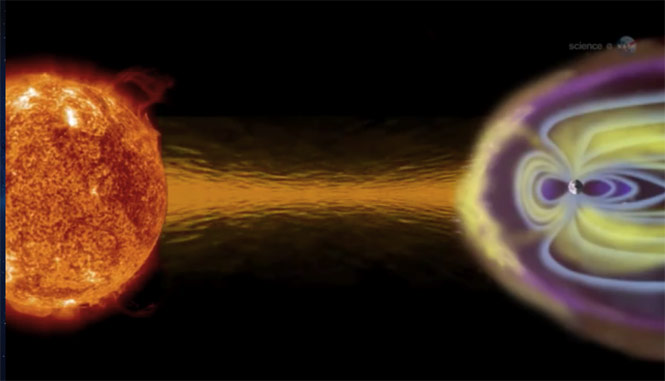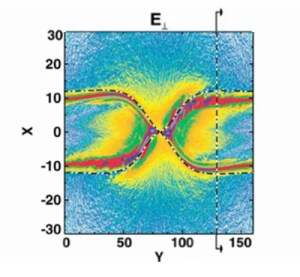 Madeleine L’Engle called them tesseracts. The Syfy channel calls them wormholes. Gamers call them portals.
Madeleine L’Engle called them tesseracts. The Syfy channel calls them wormholes. Gamers call them portals.
Whatever you call them, they are fictional doorways to faraway places: another planet in the solar system … another star in the galaxy … another restaurant where the service doesn’t suck quite so bad.
But today they’re perhaps a little less fictional than yesterday. At least according to a Science@NASA post: Hidden Portals in Earth’s Magnetic Field, which says they are real, sort of. A NASA-funded researcher has discovered them surrounding the Earth at distances from 10,000 to 30,000 miles.
University of Iowa plasma physicist Jack Scudder is studying them.
“We call them X-points or electron diffusion regions,” he says. “They’re places where the magnetic field of Earth connects to the magnetic field of the Sun, creating an uninterrupted path leading from our own planet to the sun’s atmosphere 93 million miles away.”
NASA’s THEMIS spacecraft and Europe’s Cluster probes have been observing the portals, and NASA is sending a new mission, “MMS” (Magnetospheric Multiscale Mission) in 2014 to study them in more detail. MMS consists of not one but four spacecraft that will circle the earth, finding and studying the “X-points” where the Sun’s and the Earth’s magnetic fields connect and create portals.
What they are, exactly, is not yet entirely clear, but Scudder says that tons of magnetically charged particles flow through the openings, causing aurora and geomagnetic storms. Some are tiny and disappear almost instantly, while others are large and fairly stable.
According to NASA, Scudder has found shortcuts “worthy of the best portals of fiction, only this time the portals are real.”
Some might beg to differ, pointing out that the best portals of fiction are actually usable by humans, go places that are interesting and somewhat safe (as opposed to the surface of the sun, which is doubtless very interesting but not exactly safe), and can be opened and closed at will.
However, there’s no doubt that this is a pretty cool announcement. Just not one that we can use to get to Tatooine or the Delta Quadrant.
Here’s the full video from NASA:
VentureBeat's mission is to be a digital town square for technical decision-makers to gain knowledge about transformative enterprise technology and transact. Learn More


